Hedera canariensis ( Canary Islands Ivy ) and Hedera helix ( English Ivy ) are two related plants that can be useful in gardens and landscapes. Ivy is a plant that clings to various supports by itself... it does not twine up supports like some other climbing plants. This makes Ivy useful for covering walls and fences, but Ivy can also be useful for a ground cover plant. It softens rock walls, and can be useful for erosion protection and weed suppression. Both plants are very tough, drought tolerant when established, and will tolerate some sun, but are happiest in a semi-shaded position.
Ivy are considered primarily foliage plants, as the flowers are quite insignificant. Canary Islands Ivy has the larger leaf of the two, and comes in several varieties. English Ivy has a smaller leaf, and is known for being toxic to humans and animals when eaten. Both plants are sometimes used as indoor plants. The following photos were taken from around Sydney gardens.
Canary Islands Ivy used on a stone wall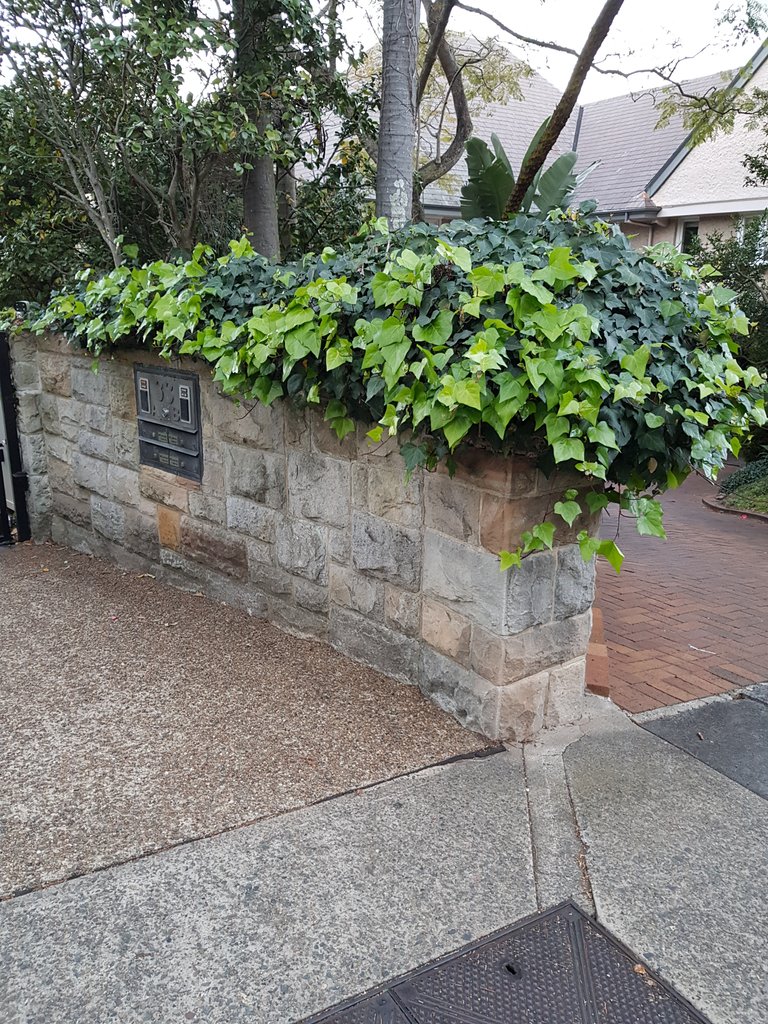
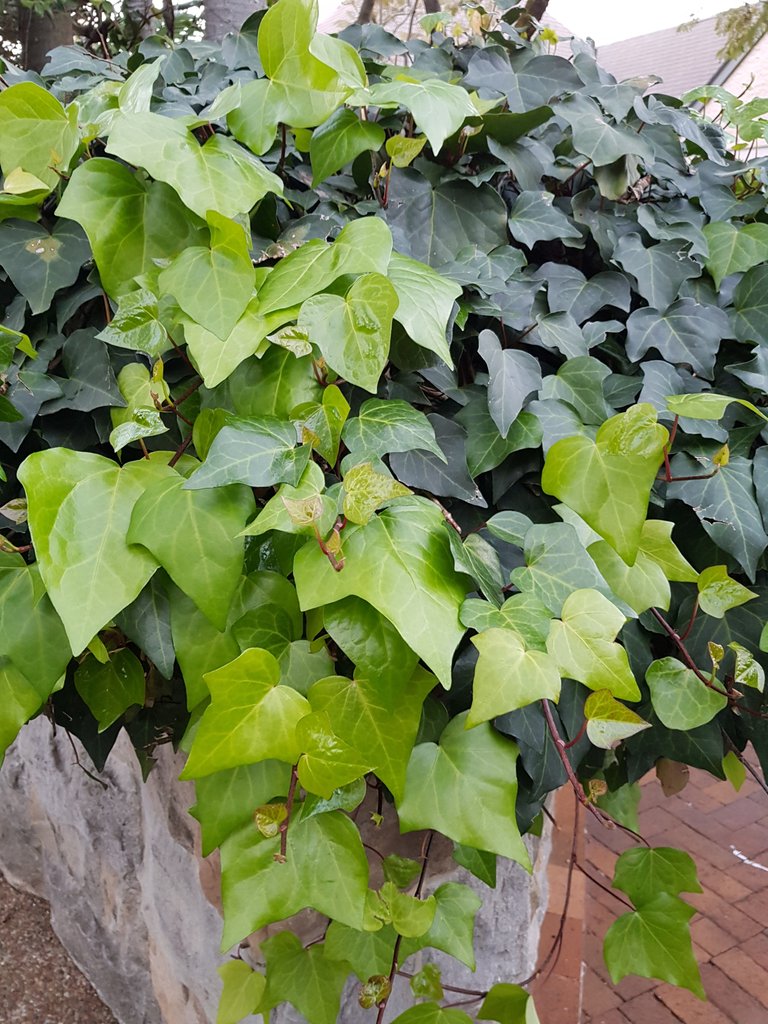
Softening a stone embankment wall
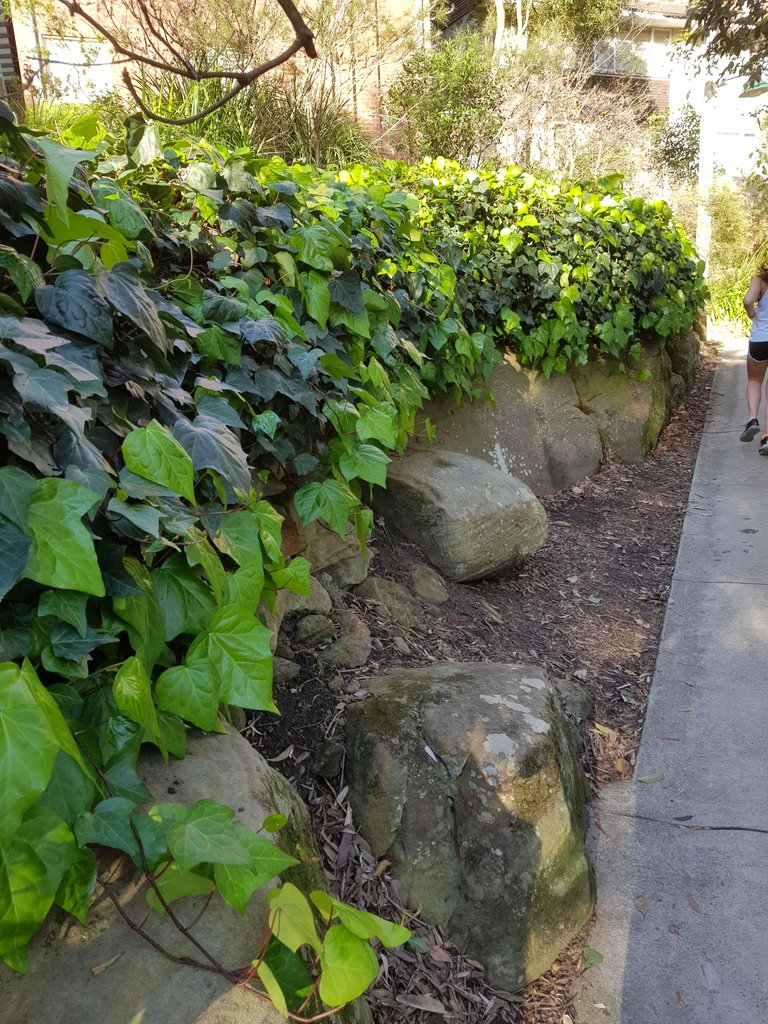 ![new7 021.jpg]
![new7 021.jpg]
Covering a fence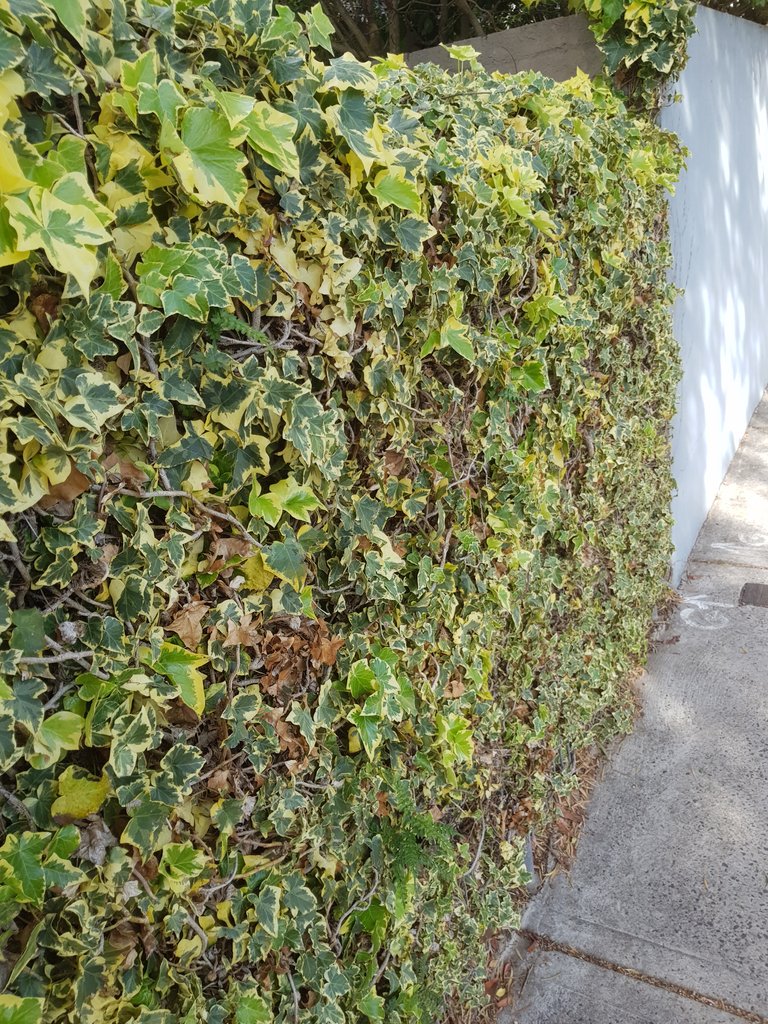
(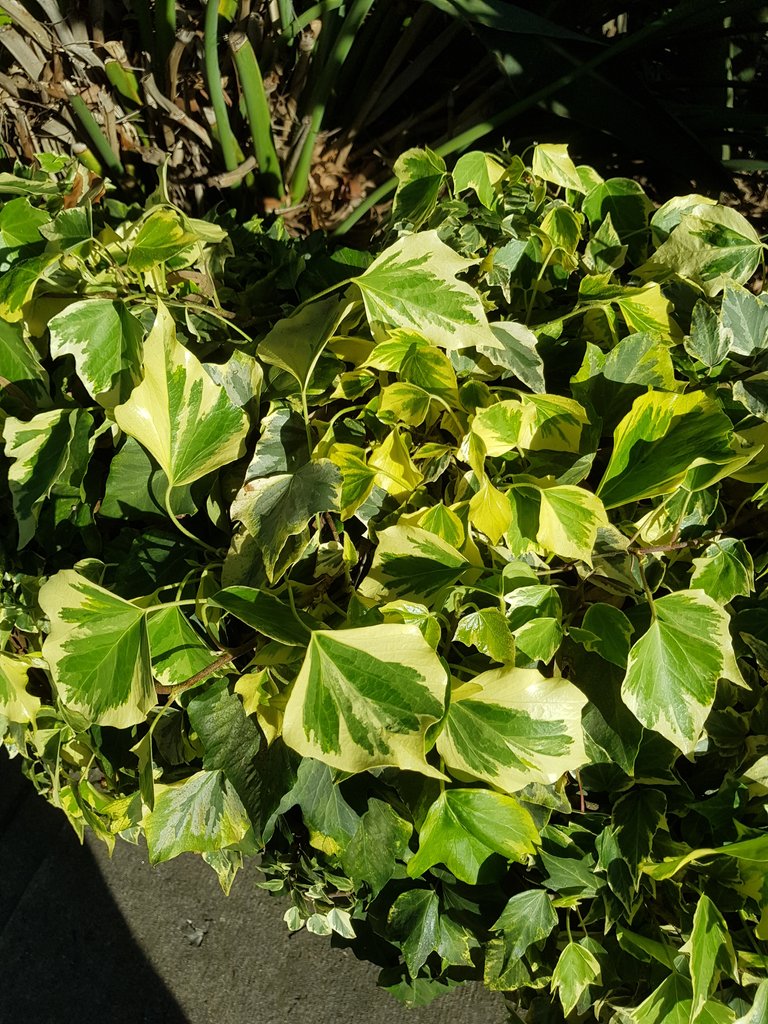 )
)
English ivy covering a rock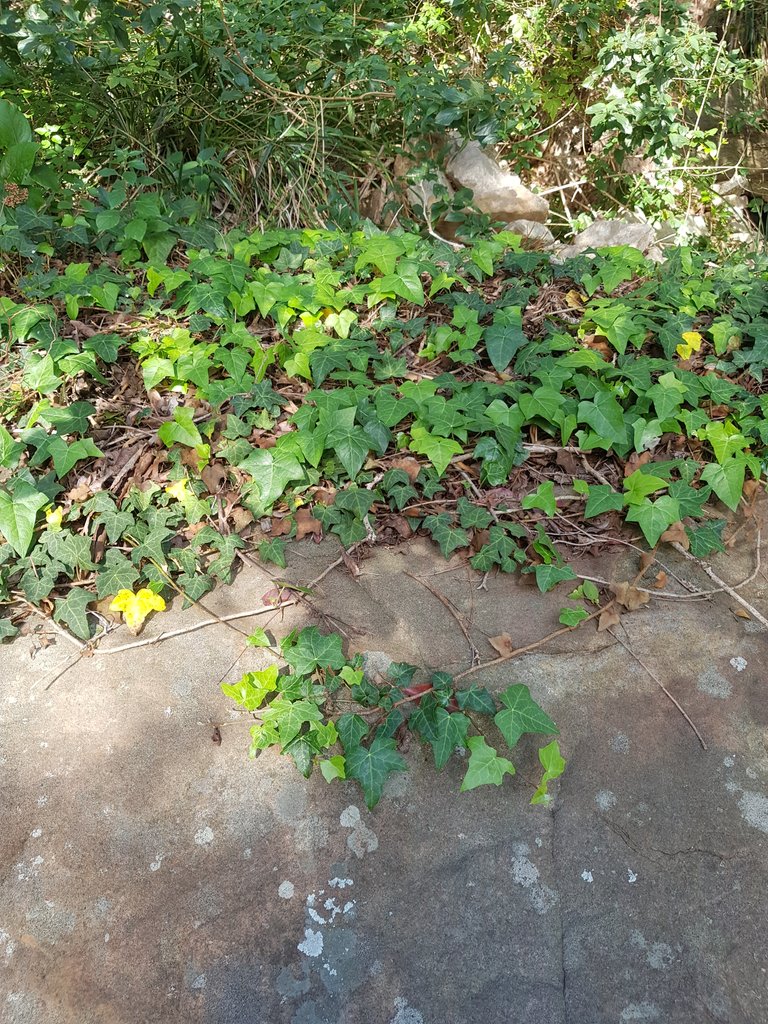
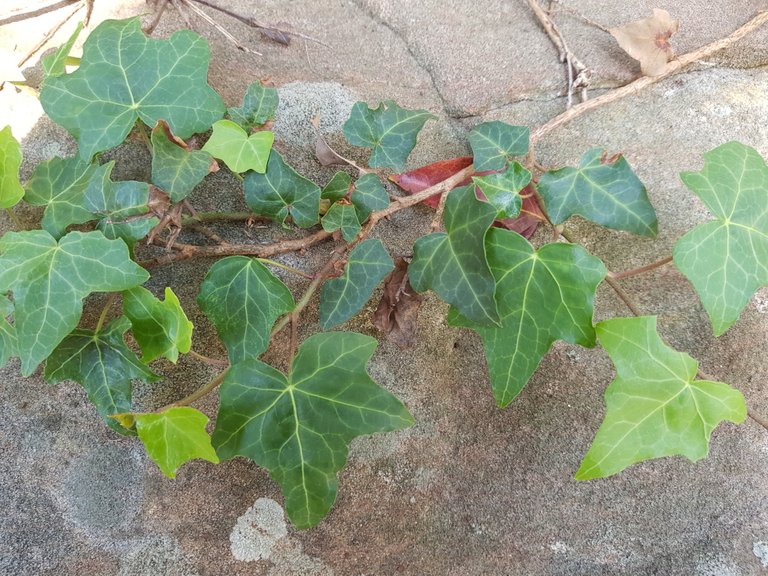
Beautiful plant @ctrl-alt-nwo! When they think of ivy, most people think of traditional English Ivy (Hedera helix), however the number of varieties of Ivy is enormous. Ivy species range in form from the huge 6-8 inch leaved Algerian Ivy (Hedera canariensis) to the tiny foliage of the hybrid 'Itsy Bitsy' or heart leaf ivy (H. 'scutifolia').
The leaves may me crinkled as with the variety 'Curlilocks', or variegated types like 'California gold' (yellow, gold, and green) or Hedera helix 'discolor' (green and creamy white).
Several types of ivy are also suitable for growing as a house plant, and can be used as a hanging plant, topiaries, or espaliered on a small trellis.
As a house plant, Ivy grows best where they get four or more hours a day of direct sunlight, but it will grow fairly well in bright indirect light.
Keep the soil evenly moist and feed with half strength, all purpose (10-10-10) fertilizer once a month.
Ivy prefers to be kept on the slightly cool side, night temperatures of 50° to 55° and day temperatures of 68° to 72° are ideal.
Overcrowded plants can be repotted during any season. For best results they should be grown in a mixture of 1 part sterile potting soil, 1 part peat moss or leaf mold and 1 part sharp sand.
To induce bushiness, pinch off stem tips.
A source: http://www.thegardenhelper.com/growingivy.html
Fav. comment Award ! Great Pics and information.
@ctrl-alt-nwo,
I think have seen something similar to this plant in my country! But I guess it's not the same leaf types that I see before! This leaf looks like a grape leaf! Good for fences and rock walls! But personally I won't plant it! Coz I think it needs to be well maintain! At the moment I don't have that much of time!
Great and useful tips for all gardening and landscaping people! Thank you very much for your effort!
Cheers~
English Ivy (Hedera helix), is an annual plant that grows creepy, strong, aggressive, with rapid growth and can grow everywhere (stem walls, tree trunks, creeping soil mixed with no vertical objects, etc.). This plant is a flowering plant species of the family Araliaceae, originating from Europe and western Asia. English ivy leaves look beautiful because they resemble maple leaves.
Plants in English ivy as a building or wall of the house, because there are roots in the stem segments can grow up and close the wall, and the roots are not the same. Besides that, English ivy is also good for hanging plants or ground cover (ground cover).
Source:
https://www.google.co.id/url?sa=t&source=web&rct=j&url=https://m.bukalapak.com/amp/hobi-koleksi/berkebun/bibit-tanaman/bowawx-jual-tanaman-hias-gantung-ivy-hedera-heliks-english-ivy&ved=2ahUKEwi60fasnKjeAhUWSY8KHdAdAhsQFjAYegQICBAB&usg=AOvVaw2Qp6Pi4zsbUG6GsFUzuLdx&cf=1
Silly Sausage Award ! Very nice selection of Pics.
Shared on twitter promoting good quality content on #Steemit.
Thanks again for sharing your photographs and blog.
Have a great weekend.
Stephen
#Promo-Steem #steemtalent #JoinSteemit #Steemit
The Tale of Two Ivies. #STEEM #steemtalent #JoinSteemit #Steemit
#garden #gardening #gardensworld #plant #life #blog #blogger #australia #photography #photographer
Thanks Stephen !
Hedera canariensis is a species of ivy (genus Hedera) which is native to the Atlantic coast in Canary islands and northern Africa. Its common name is the Canarian ivy.

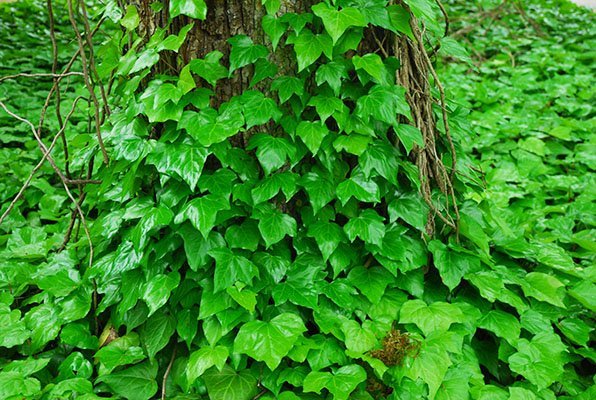
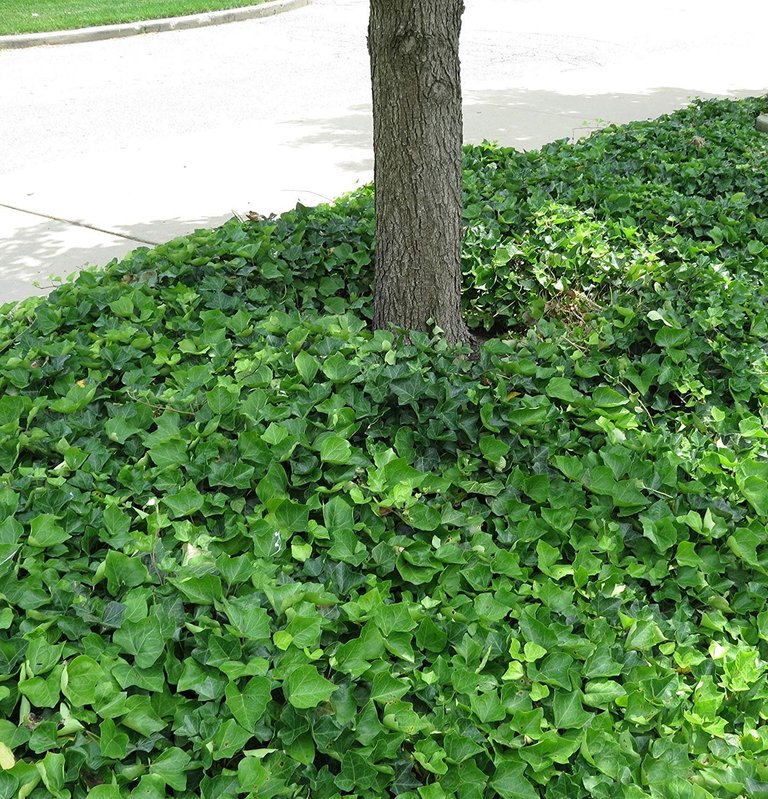
Source
Source
It is an evergreen perennial climbing or trailing woody plant shrub or bush, growing to 20–30 m high where suitable surfaces (trees, cliffs, walls) are available, and also growing as ground cover where there are no vertical surfaces. It climbs by means of aerial rootlets which cling to the substrate. In warm climates, it grows more rapidly and becomes established faster than the related H. hibernica, and H. helix. It is endemic to the Canary islands where it is quite common especially in Laurel forest of Barbusano.
Source
the leaves of Hedera canariensis are broad, 5 to 20 cm, glossy dark green in colour and a little leathery, with 1-5 lobes, regular in size and shape. It is cultivated in gardens and used in floral arrangements. The flowers are greenish and the fruits, globular and black when ripe. Young stems are green or greenish-brown, sometimes tinged with red or purple, becoming grey or grey brown at maturity.
Source
magoo-2 found a series of multi accounts of a same owner is following your articles to cheat your generous rewards.
magoo-2 found these accounts are suspicious & can be multi accounts of a single owner. Conclusion is based on last 1 year transactions:
@alves
@devid1996
@mhyeasin
@sadikulaziz
@msena
@kilee
@ripon1
@googlefighter
@melianasagita
@ashasikder
@hichako
magoo-2
Check our latest multi comment spam update report
It looks like that you have tracked those accounts where only made transaction based on who comments in sir @ctrl-alt-nwo post. But transaction not means multi accounts. I have a relation with my several friends in facebook group where I sell my steem or sbd. Some of them also follow me and i think some of them also made comment on sir @ctrl-alt-nwo post. That not means I'm a multi user. And I'm not a mad that I use 11 accounts as you recommend, it's totally foolish idea.
Amazing plant, my friend and at its best, the glossiest, biggest and most extrovert of all the ivies. We first spotted it covering the ground in in Ranelagh Gardens in Chelsea - just over the road from where the Chelsea Flower Show's held. Avoid too much sun to maintain the glossiness and healthiness but it clearly doesn't mind a bit of morning sun; the attached picture is it covering an east facing wall of a farm building. It needs a good hack back when it gums up the gutters and obliterates the windows but that's easily done with a good sharp pair of shears. Treat it like a hedge. The more you cut it back, the denser and tighter it looks.
Any old soil, including chalk. A bit more liable to get nibbled if it's used as ground cover but cut it back in mid summer and see it come back again all glossy and lovely once more. If you're in a hurry, you could always strim it. Despite being native to the Canary Islands, it's completely hardy.
Severe frost (-4°c or below) will give the leaves a glazed, pendulous look. It can look terminal but it's not. They recover wonderfully well as soon as the temperature rises.
Thank you @ctrl-alt-nwo
A source of information: http://architecturalplants.com/plants/id/hedera-canariensis
These Ivies looks nice and is useful for walls and for a shade if made to climb on a trellis @ctrl-alt-nwo
This fast growing ivy makes a terrific ground cover for frost-free climates. It’s native to temperate regions of North Africa and the Canary Islands but is now found in tropical regions throughout the world. Plants attach to surfaces with tiny rootlets so they’re great for covering uneven surfaces, slopes, or unsightly walls without any sort of attachment or trellis.
https://www.mygardenlife.com/plant-library/4252/hedera/canariensis
English ivy is a beautiful plant with a long history. Some people value ivy for its ability to form an attractive cover over walls and tree trunks. Others consider the plant to be an annoying weed that damages the environment and must be eradicated.
English ivy is native to Europe, western Asia, and northern Africa. The plant has been introduced to other parts of the world. Unfortunately, as an introduced plant ivy may have no natural enemies to control its growth and may become invasive. An "invasive" plant spreads rapidly and hurts native organisms.
Ivy is mildly poisonous. In addition, some people develop dermatitis after coming into contact with the plant. On the other hand, the plant may have health benefits. It has other benefits as well, even in North America, where it can sometimes be problematic. In this article I'll discuss English ivy from a North American perspective.
https://dengarden.com/gardening/English-Ivy-Facts-Uses-and-Problems
These leaves look very nice on the wall. But I should stay away from the poisonous ivy! They don’t have flowers nor fruits!
Posted using Partiko iOS
Actually they do have little flowers and berries, but the berries are toxic. I know you like to eat your vegies :)
Hedera Canariensis Algerian Ivy
A vigorous climber with three lobed glossy bright green leaves. An excellent landscape plant especially when used as a ground cover. Great in dry and difficult sites.
Hardy. Grows to 3 – 4m spread
Ivy (botanically: hedera helix) is a common sight in yards and parks. Anyways, the plant, which is a member of the aralia family, can also be held as an indoor plant. Since ivy prettifies your room throughout the entire year with its ever-green leafs, we would like to introduce you to ivy as a vine or hanging plant.
https://www.awanursery.co.nz/our-plants/hedera-canariensis-algerian-ivy/
https://www.plantopedia.com/hedera-helix/
Great way to cover walls or any big space you have in the garden without to much effort
Formerly known as 'Variegata', Hedera canariensis 'Gloire de Marengo' is a vigorous climber with bright, glossy, variegated green leaves and smooth, deep red leaf stalks. The three-lobed leaves are 10 to 13cm (4 to 5in) long and triangular shaped. It is an ivy that requires a sheltered wall. In colder areas and in severe winters, it may get damaged. The silver-variegated leaves will brighten up a dark corner, but avoid total shade, as the light brings out the variegation. To grow well, it requires well-drained, alkaline soil.
The English Ivy, care as a houseplant is not difficult for those just starting out or seasoned indoor plant veterans. English ivy the common name for Hedera helix is probably one of the most durable of all houseplants, but care must be taken with watering. Like many ivies, the English ivy does not like drying out for long periods of time. On the flipside, they also don’t like over-watering.
Sources: http://www.bbc.co.uk/gardening/plants/plant_finder/plant_pages/1504.shtml
https://plantcaretoday.com/english-ivy-care.html
Nice to see this plant and to know more in details about it was great :)
@ctrl-alt-nwo, I really agree with you and by that i mean, for sure these plants will add the needed beauty to the Garden and that is because, these plants holds the Star Faced Leaves and for sure it will going to spread the unique beauty. I really like to see those walls which are covered with the plants because it really throw the eye catching effect and whenever we pass by from these kind of walls then we will stop and we will pursue the healing essence. And it's knowledge addition and good to hear that these plants are tough and in my opinion their survival time will be long. And whenever we see the varieties with same plants then that adds and bring the Artful essence in the picture.
Wishing you an great day and stay blessed. 🙂
Canary Islands Ivy looks perfect matched with this rocks. Nice contrast, green and rocky beige/grey/brown.
The English Ivy, care as a houseplant is not difficult for those just starting out or seasoned indoor plant veterans.English ivy the common name for Hedera helix is probably one of the most durable of all houseplants, but care must be taken with watering.Like many ivies, the English ivy does not like drying out for long periods of time. On the flipside, they also don’t like over-watering.

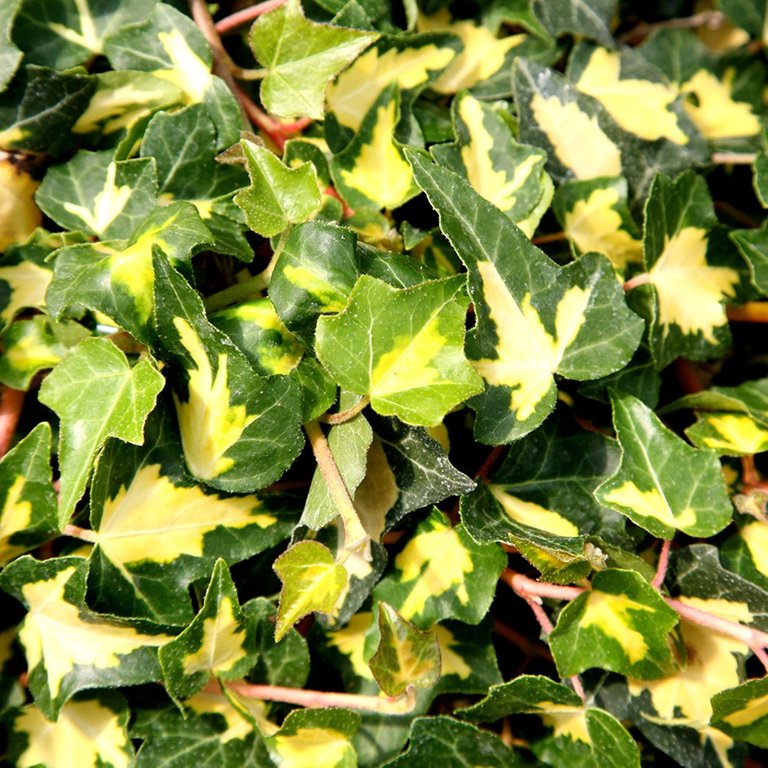
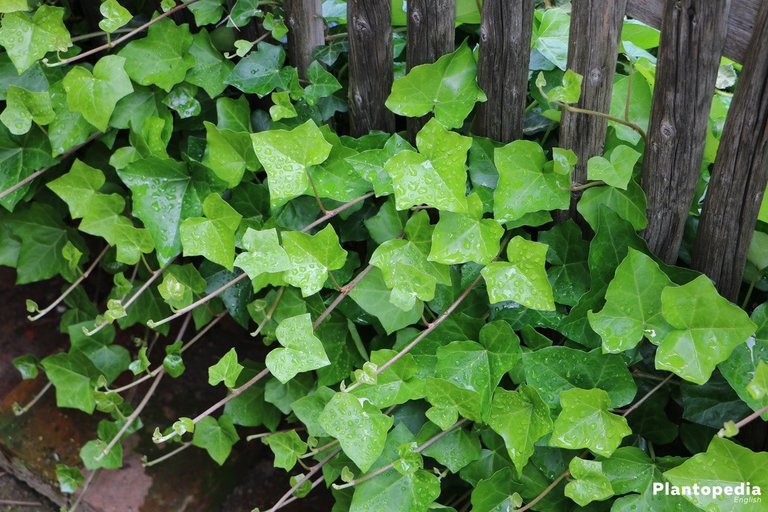
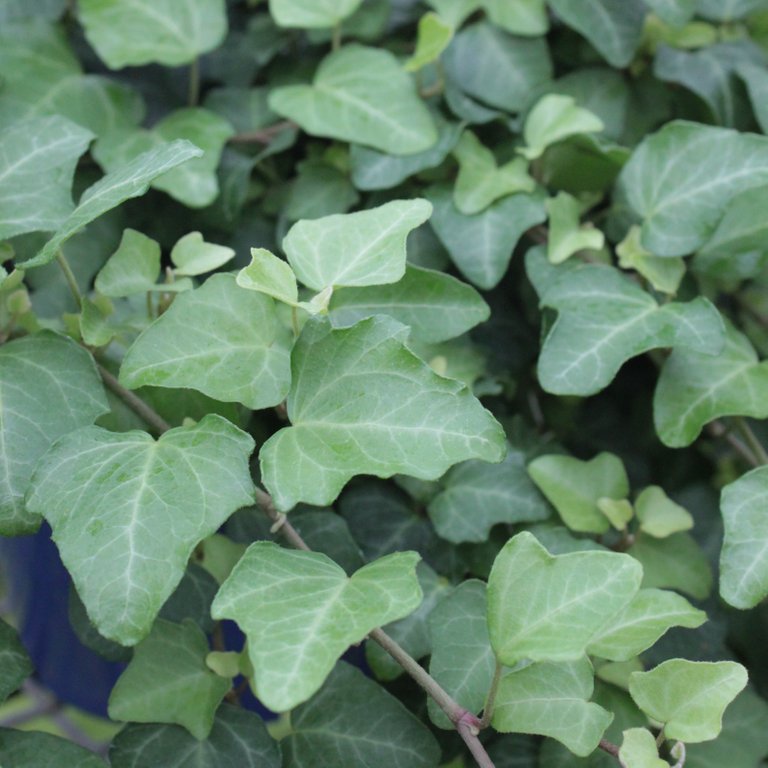 Just under a leaf joint about half way down the stem, very carefully strip away about an inch of bark.Next “pin” the area where the bark has been stripped away down to the surface of another pot with moist potting soil.
Just under a leaf joint about half way down the stem, very carefully strip away about an inch of bark.Next “pin” the area where the bark has been stripped away down to the surface of another pot with moist potting soil.
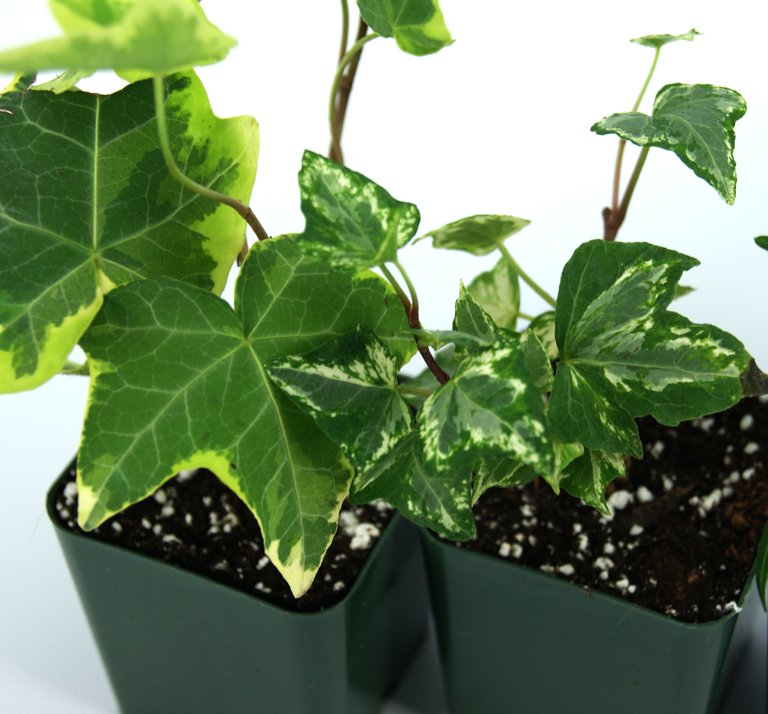
During the active growing season, when growing in a pot, they do like a regular diet of a liquid feed fertilizer like Miracle Grow, about every 3rd watering.For best results, use a well-drained soil designed for houseplants. An English ivy plant can be an active grower.
One of the outstanding characteristics of English ivy is the case with which it propagates.New plants will start easily from cuttings taken at almost any time of year; the cooler periods, however, are preferable.The first way to propagate ivy indoors is by layering.Short pieces, known as mallet cuttings, with only one strong node and having potential roots below a tuft of leaves, do nicely; so take longer cuttings of older wood.
Source.
Congratulations @ctrl-alt-nwo!
Your post was mentioned in the Steemit Hit Parade in the following category:
Hedera canariensis growing vine of the genus Hedera also known as Canarian Ivy, Hedera canariensis perennial evergreen used as ornamental, ground cover or hedge plant and also drought tolerant plant, can grow in temperate, mediterranean or subtropics climate or as houseplant and growing in hardiness zone 5-10.
Hedera canariensis leaves
Leaves color green or variegate green with white or yellow in heart to lobed shape five lobes like triangle.
Flower color yellow, flowers small (1mm) and grow in clusters.
source
Hedera helix is an evergreen climbing plant, growing to 20–30 m (66–98 ft) high where suitable surfaces (trees, cliffs, walls) are available, and also growing as groundcover where no vertical surfaces occur. It climbs by means of aerial rootlets with matted pads which cling strongly to the substrate. The ability to climb on surfaces varies with the plants variety and other factors:


Hedera helix prefers non-reflective, darker and rough surfaces with near-neutral pH. It generally thrives in a wide range of soil pH with 6.5 being ideal, prefers moist, shady locations and avoids exposure to direct sunlight, the latter promoting drying out in winter.
Hedera canariensis is an evergreen perennial climbing or trailing woody plant shrub or bush, growing to 20–30 m high where suitable surfaces (trees, cliffs, walls) are available, and also growing as ground cover where there are no vertical surfaces. It climbs by means of aerial rootlets which cling to the substrate. In warm climates, it grows more rapidly and becomes established faster than the related H. hibernica, and H. helix. It is endemic to the Canary islands where it is quite common especially in Laurel forest of Barbusano.

The leaves of Hedera canariensis are broad, 5 to 20 cm, glossy dark green in colour and a little leathery, with 1-5 lobes, regular in size and shape. It is cultivated in gardens and used in floral arrangements. The flowers are greenish and the fruits, globular and black when ripe. Young stems are green or greenish-brown, sometimes tinged with red or purple, becoming grey or grey brown at maturity.

References123456
Hi @ctrl-alt-nwo
As a follower of @haccolong this post has been randomly selected and upvoted by @hoaithu's Curation Trail with 16upvotes
This is random free upvote daily when you follow @haccolong
Check my blog to get the best service for you.
NOTE
I like your flowers, brilliant and gorgeous.
I also have a rose garden, after which I will take pictures and post, hope you will like them.
Yes, i had a look at your blog, you have some nice roses there, good to see !
Thanks for visiting, I will take care of them to have beautiful pictures. Maybe I should write about flowers on my blog to help it reduce poverty.
Have a nice day!
Hedera canariensis (Algerian ivy) is a lot like its close relative Hedera helix (English ivy), and has most of the same qualities, both good and bad. The most obvious difference is that it has much larger leaves than H. helix, but there are a few other differences as well.


image source
image source
When you do a search for this plant, most of the sites that come up involve outdoor cultivation. It's apparently pretty low-maintenance, and hardy in a lot of places (there's disagreement about the exact range possible: everybody agrees it will grow in zones 8 and up, and everybody agrees it will die in 5b or below, but anywhere between 6a and 7b is debatable, I guess. Also variegated varieties are said to be less cold-tolerant.), and it's pretty pollution- and salt-tolerant, I guess, as well. Also people usually note that it's from northwest Africa (also Portugal and the Canary Islands -- hence the name -- and that general region).
content source
Very beautiful selection of photos. I really liked it. I would like to have a parcan on which such ivy would grow.
It is an evergreen perennial climbing or trailing woody plant shrub or bush, growing to 20–30 m high where suitable surfaces (trees, cliffs, walls) are available, and also growing as ground cover where there are no vertical surfaces. It climbs by means of aerial rootlets which cling to the substrate. In warm climates, it grows more rapidly and becomes established faster than the related H. hibernica, and H. helix. It is endemic to the Canary islands where it is quite common especially in Laurel forest of Barbusano.
source
magoo-2 found a series of multi accounts of a same owner is following your articles to cheat your generous rewards.
magoo-2 found these accounts are suspicious & can be multi accounts of a single owner. Conclusion is based on last 30 days transactions:
@astique
@alinaloredana
@archista
magoo-2
Check our latest multi comment spam update report
Nice different shades of green. You seem to be an expert in plants, I wish I could recognise all these different leaves.
It comes with experience :)
English ivy, or Hedera helix, is an evergreen plant that is found in many parts of Canada and the United States. Hedera hibernica is a similar plant that has also been introduced to North America and is often known as English ivy. In its native habitat the common name of this plant is Atlantic or Irish ivy. Like Hedera helix, it may become invasive.
The part of English ivy that most people are familiar with is the thick, lobed, and often glossy leaves. These are usually medium to dark green in colour and have light green, yellow, or white veins. There are three to five lobes on each leaf.
It is an evergreen perennial climbing or trailing woody plant shrub or bush, growing to 20–30 m high where suitable surfaces (trees, cliffs, walls) are available, and also growing as ground cover where there are no vertical surfaces. It climbs by means of aerial rootlets which cling to the substrate. In warm climates, it grows more rapidly and becomes established faster than the related H. hibernica, and H. helix. It is endemic to the Canary islands where it is quite common especially in Laurel forest of Barbusano.
https://dengarden.com/gardening/English-Ivy-Facts-Uses-and-Problems
https://en.wikipedia.org/wiki/Hedera_canariensis
An interesting and useful post. Canary ivy is a shade-tolerant, climbing plant. It blooms with white nondescript flowers, at the age of 10-13 years, the flowers emit an unpleasant smell, and its fruits are poisonous, for these reasons the flowers are simply removed
Canary ivy, although considered shade-tolerant, still prefers good solar lighting. Immoths are subtropical areas of most continents, but with proper care, the plant will feel great in indoor conditions.
https://agronomu.com/bok/5065-osobennosti-uhoda-za-kanarskim-plyuschom-v-domashnih-usloviyah.html
Common ivy (lat. Hedera helix) is a curly evergreen shrub that attaches to trees and rocks with its many similar roots. Leaves alternate, petioled, shiny, naked, leathery. Young plants have 3-5 lobed leaves. Older flowering plants have apical leaves, simple, elliptical or narrowly ovoid. The flowers are greenish-yellow, collected in simple umbrellas, which in turn form a brush. The fruit in the form of a berry, first green and then black, ripens in January-February. Inedible for humans, but serves as a favorite food for birds in winter. It blooms from late summer to October. Seeds spread with bird droppings.
http://hnb.com.ua/articles/s-zdorovie-plyushch_obyknovennyy-2733
Common Name(s):Algerian ivy, Canary Island ivy, Canary ivy, Coney Island ivy, Madeira ivyCultivar(s):'Gloire de marengo', 'Marginomaculata' , 'Ravensholst' , 'Striata', 'Gloire de marengo' , 'Marginomaculata' , 'Ravensholst' , 'Striata'Categories:Groundcover, Poisonous Plants, VinesComment:
Algerian ivy is a woody, climbing or creeping, evergreen vine with large leaves. It may be grown as a ground cover but it needs to be confined as it can be weedy. Does well as a houseplant. It is salt tolerant and leaves turn bronze in winter.
Your Backyard Garden Information Source
HomeGarden ThemesAlpine GardenAnnual GardenBog GardenDry GardenHerb GardenOrganic GardenPerennial GardenRose GardenShade GardenVegetable GardenWater GardenTips & ArticlesArticlesCompostGardening GuideGardening TipsGrowing from SeedInsectsPlant DiseasePotting Soil MixturesGarden DesignBulbsContainer GardenFence DesignGreenhouseGarden DesignsGarden PlansTomato PlantsForum & EducationCommon NamesEncyclopediaHardiness ZonesLawn CarePopular PlantsPumpkinsTreesGarden InterestGarden CatalogsMy GardenPoems and VersusPlant FinderDonations PleaseCampfire SongsGarden Interest
Hedera Canariensis ( Gloire De Marengo Canary Island Ivy )
This evergreen, self-clinging, vigorous climber is a popular ground cover for steep slopes and is often grown on walls to visually soften or add an aged look to the architecture. Its leaves are heart-shaped, glossy and has cream to white margins and grey-streaked centers with speckles in the cream-colored margins. Though hardy and trouble-free, this plant should never be allowed to grow up the trunks of trees or to climb on wood. Water will vary by species, but most plants do fine with normal watering. This trailing vine will also grow with much success in anything from deep shade to full sun. If grown in full sun in warmer climates, make sure that ample water is recieved. The American Ivy Society has divided ivies into several categories depending on leaf shape and type. The shapes include ivy, heart-shaped, fan, bird’s foot, and curly. The types are miniature – all plants with leaves less than 1inch long and delicate in appearance, Oddities – having unusual shape traits such as upright or non-vining, and variegated – leaves having more than color or a single color that is not green.
Compare this plant to: Hedera helix
Height:30 ft.Hardiness:7b to 9Foliage:Simple, alternate, shiny, smooth, heart-shaped leaves with 3-7 lobes with red-hairs below. This vine has a wider leaf than English ivyFlower:Flowers small, yellow-green, 5-parted; fruit fleshy, blackZones:7b, 8Habit:EvergreenSite:Partial shade to shade, prefers a moist, well-drained soilSize:Up to 6 in.Texture:CoarseForm:Climbing vineExposure:Partial shade to shadeFamily:AraliaceaeOrigin:EurasiaPoison Part:Berries, leavesPoison Delivery Mode:Dermatitis summer and winterSymptoms:Severe irritation and allergic contact dermatitis after a delay following contact with cell sapToxic Principle:Triterpenoid saponins and polyacetylene compoundsSeverity:SKIN IRRITATION SEVERE!Found in:Houseplant or interiorscape; landscape as cultivated woody vineGrowth Rate:Moderate to rapidClimbing Method:Trailing vine; aerial rootsTags:houseplant, salt tolerant, winter interest, evergreen
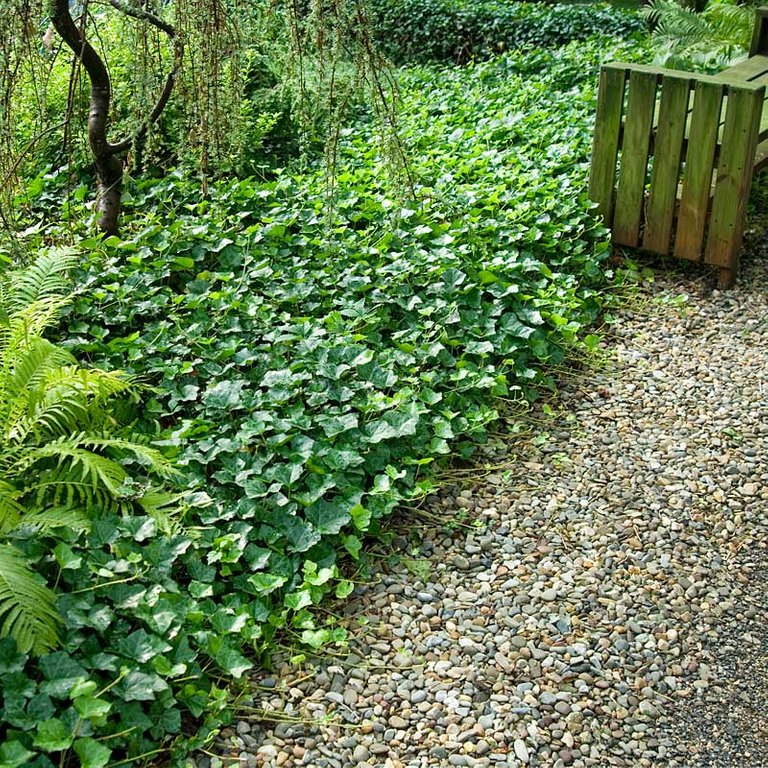
(source)<
Nice Pics, but please keep comments to 200 words maximum, thanks.
Thanks a lot and sure i will.
Big green leaves are looking beautiful . Green color is nature friendly . Everyone like this color . Walls are looking nice with this plant . Thanks
Hedera canariensis 'Gloire de Marengo'
Genus: Hedera
Species: canariensis
Variety: 'Gloire de Marengo'
Plant Type: Evergreen Climber
The 'Canary Island Ivy' has large leaves that are a marbled grey green with a bold creamy margin. As with all Ivies, it clings on with aerial roots, and is easy to grow almost anywhere.
source
Ivy plants (Hedera spp.) are popular climbing, spreading ground covers, due to their vigorous growth rate and evergreen leaves. Ivies can quickly climb up and over fences, walls and trellises. They can also help to prevent soil erosion with their deep, dense roots. Most ivy plants are grown in shady areas in regions where winters are colder. A plethora of ivy species exist, making proper identification of an ivy plant somewhat daunting. You can determine what species of ivy you have by studying the ivy's leaf characteristics, including the leaf color, shape and size.
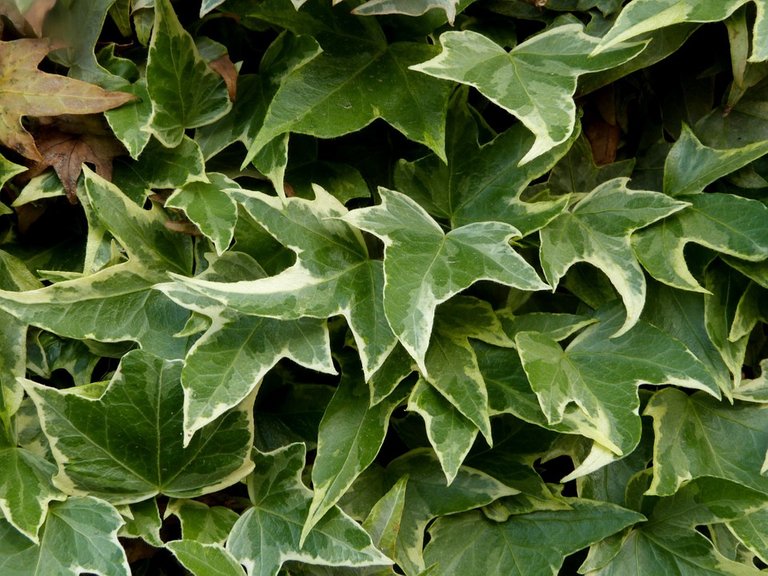
The American Ivy Society describes ivy cultivars by leaf shape and by plant type if unusual. Leaf shapes are ivy with typical flat leaves that have 5 lobes; heart-shaped which may also be triangular, with 3 lobes; fan shaped are triangular or have lobes pointing forward; bird’s foot with narrow lobes or willow-like leaves; and curly leaves are ruffled, rippled or wavy.
Plant ivy in spring or fall. Standard spacing is 1122 feet apart. Amend soil (to depth of 812 inches if possible) with organic matter such as ground bark or peat moss. Before planting, thoroughly moisten soil; also make sure transplants' roots are moist.
Most ivy ground covers should be trimmed around edges two or three times a year (use hedge shears or a sharp spade). Fence and wall plantings likewise need shearing or trimming two or three times a year. When ground cover builds up higher than you want, mow it with a rugged rotary power mower or cut it back with hedge shears. Do this in spring so ensuing growth will quickly cover bald look.
Many trees and shrubs can grow compatibly in ivy ground cover, but small, soft, or fragile plants will be smothered. Ivy ground covers can be a haven for slugs and snails and can also harbor rodents, especially if the ivy is never cut back.

English Ivy
Hedera Helix
Zones US, MS, LS, CS, TS; USDA 6-11.
Not as vigorous as Hedera algeriensis, this ubiquitous species features three- to five-lobed leaves that are dull green with paler veins and reach 24 inches long and wide.
Tremendous genetic variation has given rise to a dizzying assortment of foliage shapes, sizes, and colors.
Ivy fanciers classify the hundreds of selections according to leaf shape, and also by type if unusual.
Leaf-shape categories are bird's foot (leaves have long, prominent main lobe), curly (undulated, frilled, or curly leaves), fan (broad leaves with small lobes of roughly equal size), heart-shaped, and ivy (traditional five-lobed leaves).
Plants are also grouped as miniature (very small leaves), variegated, or arborescent (shrublike plants with unlobed leaves propagated from mature ivies).
Oddity types have unusual growth patterns, odd leaf forms, or both.
English ivies have many uses besides their usual role as ground covers. They are excellent in pots and hanging baskets, trained into intricate patterns on walls, or grown on wire frames to create topiaries. Arborescent forms make superb additions to foundation plantings and shade gardens. Some arborescent ivies are short and mounding, others more upright. All are drought tolerant and carefreegood substitutes for euonymus and cherry laurel (Prunus laurocerasus). Resistant to damage by deer. Recommended selections include the following.
https://www.southernliving.com/plants/ivy
magoo-2 found a series of multi accounts of a same owner is following your articles to cheat your generous rewards.
magoo-2 found these accounts are suspicious & can be multi accounts of a single owner. Conclusion is based on last 1 year transactions:
@jacqueline5
@african1
@merina
@marizanne
@miller1
@jerry1994
@aarshi
@nawmi
@maisha
@jenifer2
@masud1
@jerry2
@selina2
@bingham
@mulder2000
@umess
@neerose123
@diaa07
magoo-2
Check our latest multi comment spam update report
The versatile indoor plant Hedera helix ivy, commonly known as English ivy, is a valued for its attractively shaped, deep green leaves. The plant exists in a large number of varieties, including "Gold Heart," which displays green and creamy yellow leaves, or "Buttercup," with leaves that are bright yellow in sunlight and pale green in shade. English ivy is a rambunctious grower that trails gracefully from a hanging basket or winds itself up a trellis. Outdoors, English ivy is suitable for planting in U.S. Department of Agriculture plant hardiness zones 5 through 9
New plants will start easily from cuttings taken at almost any time of year; the cooler periods, however, are preferable.
The first way to propagate ivy indoors is by layering.
For starters, select vines or a runner which is fairly long.
Short pieces, known as mallet cuttings, with only one strong node and having potential roots below a tuft of leaves, do nicely; so take longer cuttings of older wood.
Beautiful plant @ctrl-alt-nwo! When they think of ivy, most people think of traditional English Ivy (Hedera helix), however the number of varieties of Ivy is enormous. Ivy species range in form from the huge 6-8 inch leaved Algerian Ivy (Hedera canariensis) to the tiny foliage of the hybrid 'Itsy Bitsy' or heart leaf ivy (H. 'scutifolia').
The leaves may me crinkled as with the variety 'Curlilocks', or variegated types like 'California gold' (yellow, gold, and green) or Hedera helix 'discolor' (green and creamy white).
the leaves of Hedera canariensis are broad, 5 to 20 cm, glossy dark green in colour and a little leathery, with 1-5 lobes, regular in size and shape. It is cultivated in gardens and used in floral arrangements. The flowers are greenish and the fruits, globular and black when ripe. Young stems are green or greenish-brown, sometimes tinged with red or purple, becoming grey or grey brown at maturity.
source
magoo-2 found a series of multi accounts of a same owner is following your articles to cheat your generous rewards.
magoo-2 found these accounts are suspicious & can be multi accounts of a single owner. Conclusion is based on last 1 year transactions:
@faizazohaib
@faraz33
@zohaib336
@shoaib721
magoo-2
Check our latest multi comment spam update report
Hedera canariensis, Willd. (H. helix var. canariensis, DC. H. algeriensis, Hort. H. maderensis, Hort. H. azbrica, Hort.). High-climbing: pubescence more scaly, hairs with 12-20 rays: lvs. large, bright green, roundish ovate, usually cordate at the base, entire or with 3-7 rather short lobes of almost equal size: umbels larger, often solitary or few; calyx-lobes broader: frs. black, sometimes ½ in. thick. Canary Isls., Madeira, N. Afr. Gn. 25, p. 141; 34, pp. 492, 496. G.M. 54:319. Var. arborescens, Koch. Not climbing, forming an upright low shrub. G.M. 54:957. Var. variegata, Hort. (H. maderensis variegata, Hort.). Lvs. entire or slightly 3- lobed, edged yellowish white. G.C. II. 15:657. G.M. 54:320.
source
magoo-2 found a series of multi accounts of a same owner is following your articles to cheat your generous rewards.
magoo-2 found these accounts are suspicious & can be multi accounts of a single owner. Conclusion is based on last 1 year transactions:
@kheightces
@thytheso
@mabir
@ristotle
@tanuesh
@alizamanjutt454
@eastmund
@vijayar
@lycusa
@snorio
@alexeyy
@surenda
@isuru1127
magoo-2
Check our latest multi comment spam update report
At its best, the glossiest, biggest and most extrovert of all the ivies. We first spotted it covering the ground in in Ranelagh Gardens in Chelsea - just over the road from where the Chelsea Flower Show's held.
Avoid too much sun to maintain the glossiness and healthiness but it clearly doesn't mind a bit of morning sun; the attached picture is it covering an east facing wall of a farm building.
It needs a good hack back when it gums up the gutters and obliterates the windows but that's easily done with a good sharp pair of shears. Treat it like a hedge. The more you cut it back, the denser and tighter it looks.
source
magoo-2 found a series of multi accounts of a same owner is following your articles to cheat your generous rewards.
magoo-2 found these accounts are suspicious & can be multi accounts of a single owner. Conclusion is based on last 1 year transactions:
@kheightces
@thytheso
@mabir
@ristotle
@tanuesh
@alizamanjutt454
@eastmund
@vijayar
@lycusa
@snorio
@alexeyy
@surenda
@isuru1127
magoo-2
Check our latest multi comment spam update report
Hedera canariensis (Algerian ivy) is a lot like its close relative Hedera helix (English ivy), and has most of the same qualities, both good and bad. The most obvious difference is that it has much larger leaves than H. helix, but there are a few other differences as well.
When you do a search for this plant, most of the sites that come up involve outdoor cultivation. It's apparently pretty low-maintenance, and hardy in a lot of places (there's disagreement about the exact range possible: everybody agrees it will grow in zones 8 and up, and everybody agrees it will die in 5b or below, but anywhere between 6a and 7b is debatable, I guess.
Also variegated varieties are said to be less cold-tolerant.), and it's pretty pollution- and salt-tolerant, I guess, as well. Also people usually note that it's from northwest Africa (also Portugal and the Canary Islands -- hence the name -- and that general region).
[source(https://plantsarethestrangestpeople.blogspot.com/2008/07/ghost-hedera-canariensis.html)
magoo-2 found a series of multi accounts of a same owner is following your articles to cheat your generous rewards.
magoo-2 found these accounts are suspicious & can be multi accounts of a single owner. Conclusion is based on last 1 year transactions:
@kheightces
@thytheso
@mabir
@ristotle
@tanuesh
@alizamanjutt454
@eastmund
@vijayar
@lycusa
@snorio
@alexeyy
@surenda
@isuru1127
magoo-2
Check our latest multi comment spam update report
There is a wide variety of ornamental ivies such as Hedera helix and Hedera canariensis. They are attractive climbing plants with variegated or glossy green leaves. Most are quite hardy and easy to care for, but a few need specialized care. Follow the instructions given on the plant label.
Ivies combine excellently with other foliage plants and are very tolerant of variable light and temperature conditions. H. canariensis will achieve magnificent proportions if re-potted when necessary.
source
magoo-2 found a series of multi accounts of a same owner is following your articles to cheat your generous rewards.
magoo-2 found these accounts are suspicious & can be multi accounts of a single owner. Conclusion is based on last 1 year transactions:
@kheightces
@thytheso
@mabir
@ristotle
@tanuesh
@alizamanjutt454
@eastmund
@vijayar
@lycusa
@snorio
@alexeyy
@surenda
@isuru1127
magoo-2
Check our latest multi comment spam update report
Common Name(s):
Algerian ivy, Canary Island ivy, Canary ivy, Coney Island ivy, Madeira ivy
Cultivar(s):
'Gloire de marengo', 'Marginomaculata' , 'Ravensholst' , 'Striata', 'Gloire de marengo' , 'Marginomaculata' , 'Ravensholst' , 'Striata'
Categories:
Groundcover, Poisonous Plants, Vines
Comment:
Algerian ivy is a woody, climbing or creeping, evergreen vine with large leaves. It may be grown as a ground cover but it needs to be confined as it can be weedy. Does well as a houseplant. It is salt tolerant and leaves turn bronze in winter.
source
magoo-2 found a series of multi accounts of a same owner is following your articles to cheat your generous rewards.
magoo-2 found these accounts are suspicious & can be multi accounts of a single owner. Conclusion is based on last 30 days transactions:
@itamarr
@chocosteem
@berwyn
@benedetto
@bronter
@hungduan
magoo-2
Check our latest multi comment spam update report
This evergreen perennial can climb up to 10m high by means of rootlets on the stems, or it can spread over the ground to form a carpet. The leaves are green, sometimes with broad silvery-grey or white edges, and glossy when new, becoming leathery with age. The hairs on juvenile leaves are reddish. The flowers are green in terminal, globular umbels, but seldom appear. Fruits are drupes, which are black when ripe.
source
magoo-2 found a series of multi accounts of a same owner is following your articles to cheat your generous rewards.
magoo-2 found these accounts are suspicious & can be multi accounts of a single owner. Conclusion is based on last 1 year transactions:
@saikr
@christian.danny
@aaeesha
@sarah.taylor
magoo-2
Check our latest multi comment spam update report
Common Name Canary Island Ivy
Plant Type Climber, Evergreen, Ground Cover, Hedge, Outdoor, Perennial, Vertical Gardens
Dimensions 15cm high x 3m wide
Sunlight Full Sun, Part Sun, Shade
Bird/Wildlife Attracting No
Foliage Colour Green
Botanical Genus Hedera
Botanical Species canariensis
Flower Type No
Foliage Type Lobed - Deeply Indented Margins
Width 300 cm
Height 15 cm
source
Hedera - Ivy - is an evergreen climbing or ground-creeping woody plant. When creeping, it rarely exceed 20 cm height, but when climbing on suitable surfaces,using specialised hairs that enable it to cling, it can climb to at least 30m above the ground. The leaves of ivy are shiny, dark green (pale green when young) with 3 - 5 lobes.Mature plants produce yellow-green flower-clusters, followed by black berries. All parts of the plant are toxic, and contact with the sap may irritate skin, or cause an allergic reaction.There are many cultivars. 'Canary Island Ivy' is a fast growing plant, ideal for a hanging baskets or trained up on a trellis. It needs bright, filtered light. The plant will get leggy and grow weak if the light is too low.
source
magoo-2 found a series of multi accounts of a same owner is following your articles to cheat your generous rewards.
magoo-2 found these accounts are suspicious & can be multi accounts of a single owner. Conclusion is based on last 30 days transactions:
@alves
@devid1996
@mhyeasin
@sadikulaziz
@msena
@kilee
@ripon1
@googlefighter
@melianasagita
@ashasikder
@hichako
magoo-2
Check our latest multi comment spam update report
This plant,s double shade leaves are giving beauty ,that,s very beautiful and useful .
foliage plants are good for oxygen.